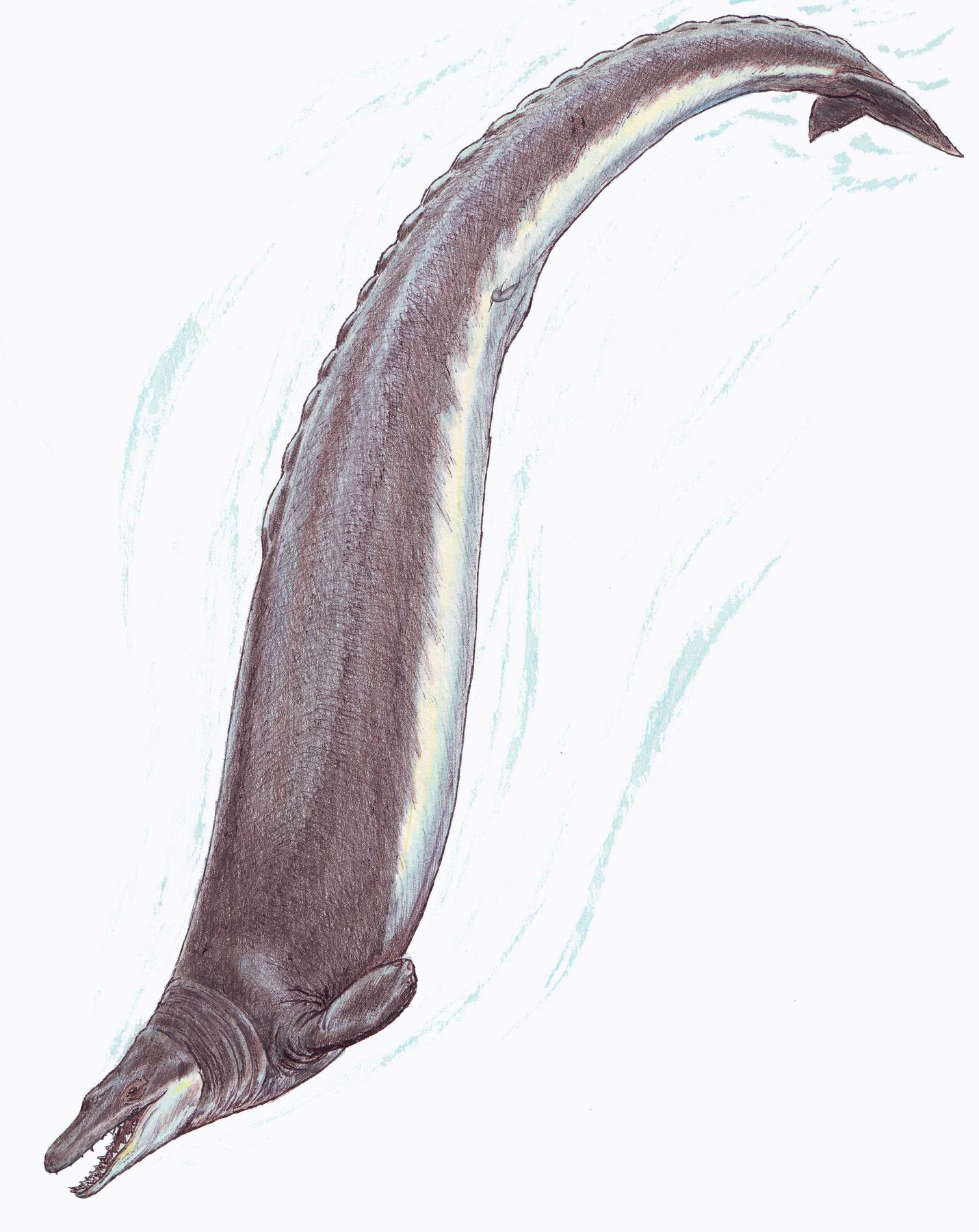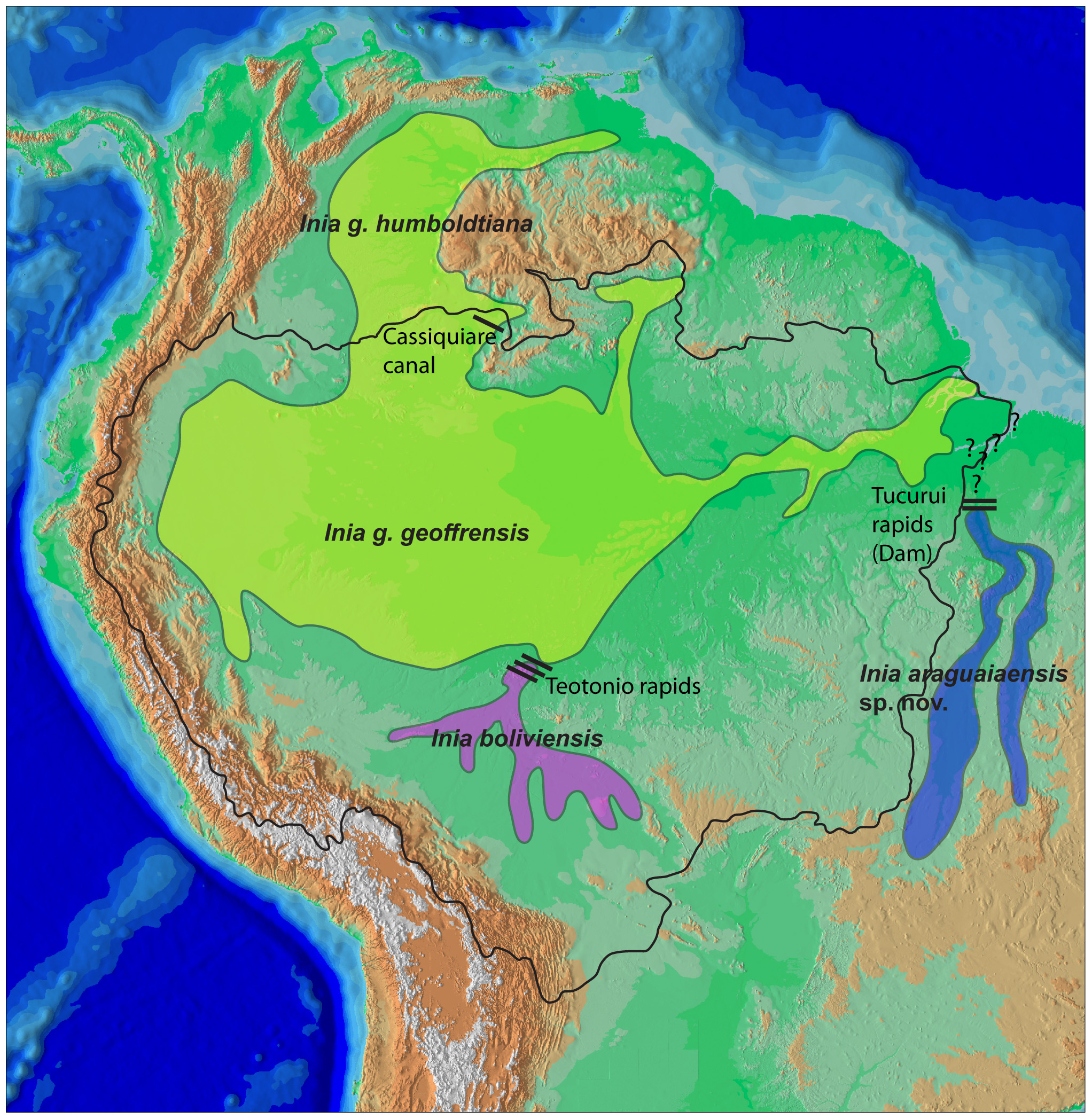|
Brachydelphis
''Brachydelphis'' is a genus of pontoporiid known from the Late Miocene Pisco Formation of Peru and the Bahía Inglesa Formation of Chile. Taxonomy Two species are recognized, ''B. jahuayensis'' and ''B. mazeasi''. ''B. mazeasi'' has a shortened rostrum that gives ''Brachydelphis'' its name,C. de Muizon. 1988. Les vertebres fossiles de la Formation Pisco (Perou). Troisieme partie: Les Odontocetes (Cetacea, Mammalia) du Miocene. ''Editions Recherche sur les Civilisations'' (78)1-244. ''B. jahuayensis'' differs from the type species in having a longer snout and higher tooth count.O. Lambert and C. de Muizon. 2013. A new long-snouted species of the Miocene pontoporiid dolphin Brachydelphis and a review of the Mio-Pliocene marine mammal levels in the Sacaco Basin, Peru. Journal of Vertebrate Paleontology 33(3):709-721 Biology ''Brachydelphis mazeasi'' was capable of suction-feeding judging from its short rostrum, but the longer rostrum of ''B. jahauyensis'' allowed it to capture sm ... [...More Info...] [...Related Items...] OR: [Wikipedia] [Google] [Baidu] |
Pisco Formation
The Pisco Formation is a geologic formation located in Peru, on the southern coastal desert of Ica, Peru, Ica and Arequipa. The approximately thick formation was deposited in the Pisco Basin, spanning an age from the Miocene, Middle Miocene up to the Early Pleistocene, roughly from 15 to 2 Ma. The tuffaceous sandstones, diatomaceous siltstones, Conglomerate (geology), conglomerates and dolomite (rock), dolomites were deposited in a lagoonal to near-shore depositional environment, environment, in bays similar to other Pacific South American formations as the Caldera Basin, Bahía Inglesa and Coquimbo Formations of Chile. Several specialists consider the Pisco Formation one of the most important Lagerstätten,Brand et al., 2004Brand et al., 2011 based on the large amount of exceptionally preserved marine fossils, including sharks (most notably megalodon), penguins, whales, dolphins, birds, marine crocodiles and aquatic giant sloths. Famous fossils found in these layers include the ... [...More Info...] [...Related Items...] OR: [Wikipedia] [Google] [Baidu] |
List Of Extinct Cetaceans
The list of extinct cetaceans features the extinct genera and species of the order Cetacea. The cetaceans (whales, dolphins and porpoises) are descendants of land-living mammals, the even-toed ungulates. The earliest cetaceans were still hoofed mammals. These early cetaceans became gradually better adapted for swimming than for walking on land, finally evolving into fully marine cetaceans. This list currently includes only fossil genera and species. However, the Atlantic population of gray whales (''Eschrichtius robustus'') became extinct in the 18th century, and the baiji (or Chinese river dolphin, ''Lipotes vexillifer'') was declared "functionally extinct" after an expedition in late 2006 failed to find any in the Yangtze River. Suborder Archaeoceti Family Ambulocetidae (Eocene) * ''Ambulocetus'' * ''Himalayacetus'' * '' Gandakasia'' Family Basilosauridae (Late Eocene) * Basilosaurinae ** ''Basilosaurus'' ** ''Basiloterus'' ** ''Eocetus'' ** ''Platyosphys'' * Dorudonti ... [...More Info...] [...Related Items...] OR: [Wikipedia] [Google] [Baidu] |
Miocene
The Miocene ( ) is the first geological epoch of the Neogene Period and extends from about (Ma). The Miocene was named by Scottish geologist Charles Lyell; the name comes from the Greek words (', "less") and (', "new") and means "less recent" because it has 18% fewer modern marine invertebrates than the Pliocene has. The Miocene is preceded by the Oligocene and is followed by the Pliocene. As Earth went from the Oligocene through the Miocene and into the Pliocene, the climate slowly cooled towards a series of ice ages. The Miocene boundaries are not marked by a single distinct global event but consist rather of regionally defined boundaries between the warmer Oligocene and the cooler Pliocene Epoch. During the Early Miocene, the Arabian Peninsula collided with Eurasia, severing the connection between the Mediterranean and Indian Ocean, and allowing a faunal interchange to occur between Eurasia and Africa, including the dispersal of proboscideans into Eurasia. During the ... [...More Info...] [...Related Items...] OR: [Wikipedia] [Google] [Baidu] |
Type (biology)
In biology, a type is a particular specimen (or in some cases a group of specimens) of an organism to which the scientific name of that organism is formally attached. In other words, a type is an example that serves to anchor or centralizes the defining features of that particular taxon. In older usage (pre-1900 in botany), a type was a taxon rather than a specimen. A taxon is a scientifically named grouping of organisms with other like organisms, a set that includes some organisms and excludes others, based on a detailed published description (for example a species description) and on the provision of type material, which is usually available to scientists for examination in a major museum research collection, or similar institution. Type specimen According to a precise set of rules laid down in the International Code of Zoological Nomenclature (ICZN) and the International Code of Nomenclature for algae, fungi, and plants (ICN), the scientific name of every taxon is almost al ... [...More Info...] [...Related Items...] OR: [Wikipedia] [Google] [Baidu] |
Bahía Inglesa Formation
Caldera Basin ( es, Cuenca de Caldera) is a sedimentary basin located in the coast of northern Chile west of Copiapó. The basin has a fill of marine sediments of Late Cenozoic age. With a north-south extension of and an east-west width of the basin occupies an area between the coast and the Chilean Coast Range and between the port of Caldera and the mouth of Copiapó River. The sedimentary fill rests on metamorphic rocks of Paleozoic age and on plutonic rocks of Mesozoic The Mesozoic Era ( ), also called the Age of Reptiles, the Age of Conifers, and colloquially as the Age of the Dinosaurs is the second-to-last era of Earth's geological history, lasting from about , comprising the Triassic, Jurassic and Cretace ... age. Stratigraphy References Further reading * * * * * * * * * * * {{Geology of Chile Forearc basins Geology of Atacama Region Sedimentary basins of Chile ... [...More Info...] [...Related Items...] OR: [Wikipedia] [Google] [Baidu] |
Evolution Of Cetaceans
The evolution of cetaceans is thought to have begun in the Indian subcontinent from even-toed ungulates 50 million years ago (mya) and to have proceeded over a period of at least 15 million years. Cetaceans are fully aquatic marine mammals belonging to the order Artiodactyla and branched off from other artiodactyls around 50 mya. Cetaceans are thought to have evolved during the Eocene (56-34 mya), the second epoch of the present-extending Cenozoic Era. Molecular and morphological analyses suggest Cetacea share a relatively recent closest common ancestor with hippopotami and that they are sister groups. Being mammals, they surface to breathe air; they have 5 finger bones (even-toed) in their fins; they nurse their young; and, despite their fully aquatic life style, they retain many skeletal features from their terrestrial ancestors.Thewissen, J. G. M., L. N. Cooper, J. C. George, and S. Bajpai. 2009. From land to water: the origin of whales, dolphins, and porpoises. Evolut ... [...More Info...] [...Related Items...] OR: [Wikipedia] [Google] [Baidu] |
List Of Cetaceans
Cetacea is an infraorder that comprises the 94 species of whales, dolphins, and porpoises. It is divided into toothed whales (Odontoceti) and baleen whales (Mysticeti), which diverged from each other in the Eocene some 50 mya (unit), million years ago (mya). Cetaceans are descended from land-dwelling hoofed mammals, and the now extinct archaeocetes represent the several transitional phases from terrestrial to completely aquatic. Historically, cetaceans were thought to have descended from the wolf-like mesonychids, but cladistic analyses confirm their placement with even-toed ungulates in the order Cetartiodactyla. Whale populations were drastically reduced in the 20th century from intensive whaling, and the activity was globally banned in 1982. Smaller cetaceans are at risk of accidentally getting caught by fishing vessels using, namely, seine fishing, drift netting, or gill netting operations. Conventions The following is a list of currently existing (or, in the jargon of ta ... [...More Info...] [...Related Items...] OR: [Wikipedia] [Google] [Baidu] |
River Dolphins
River dolphins are a polyphyletic group of fully aquatic mammals that reside exclusively in freshwater or brackish water. They are an informal grouping of dolphins, which itself is a paraphyletic group within the infraorder Cetacea. Extant river dolphins are placed in two superfamilies, Platanistoidea and Inioidea. They comprise the families Platanistidae (the South Asian dolphins), the recently extinct Lipotidae (Yangtze river dolphin), Iniidae (the Amazonian dolphins) and Pontoporiidae. There are five extant species of river dolphins. River dolphins, alongside other cetaceans, belong to the clade Artiodactyla, with even-toed ungulates, and their closest living relatives the hippopotamuses, from which they diverged about 40 million years ago. Specific types of Dolphins can be pink. River dolphins are relatively small compared to other dolphins, having evolved to survive in warm, shallow water and strong river currents. They range in size from the long South Asian river dolp ... [...More Info...] [...Related Items...] OR: [Wikipedia] [Google] [Baidu] |
Prehistoric Cetacean Genera
Prehistory, also known as pre-literary history, is the period of human history between the use of the first stone tools by hominins 3.3 million years ago and the beginning of recorded history with the invention of writing systems. The use of symbols, marks, and images appears very early among humans, but the earliest known writing systems appeared 5000 years ago. It took thousands of years for writing systems to be widely adopted, with writing spreading to almost all cultures by the 19th century. The end of prehistory therefore came at very different times in different places, and the term is less often used in discussing societies where prehistory ended relatively recently. In the early Bronze Age, Sumer in Mesopotamia, the Indus Valley Civilisation, and ancient Egypt were the first civilizations to develop their own scripts and to keep historical records, with their neighbors following. Most other civilizations reached the end of prehistory during the following Iron Age. T ... [...More Info...] [...Related Items...] OR: [Wikipedia] [Google] [Baidu] |
Miocene Mammals Of South America
The Miocene ( ) is the first geological epoch of the Neogene Period and extends from about (Ma). The Miocene was named by Scottish geologist Charles Lyell; the name comes from the Greek words (', "less") and (', "new") and means "less recent" because it has 18% fewer modern marine invertebrates than the Pliocene has. The Miocene is preceded by the Oligocene and is followed by the Pliocene. As Earth went from the Oligocene through the Miocene and into the Pliocene, the climate slowly cooled towards a series of ice ages. The Miocene boundaries are not marked by a single distinct global event but consist rather of regionally defined boundaries between the warmer Oligocene and the cooler Pliocene Epoch. During the Early Miocene, the Arabian Peninsula collided with Eurasia, severing the connection between the Mediterranean and Indian Ocean, and allowing a faunal interchange to occur between Eurasia and Africa, including the dispersal of proboscideans into Eurasia. During the late ... [...More Info...] [...Related Items...] OR: [Wikipedia] [Google] [Baidu] |
Neogene Chile
The Neogene ( ), informally Upper Tertiary or Late Tertiary, is a geologic period and system that spans 20.45 million years from the end of the Paleogene Period million years ago ( Mya) to the beginning of the present Quaternary Period Mya. The Neogene is sub-divided into two epochs, the earlier Miocene and the later Pliocene. Some geologists assert that the Neogene cannot be clearly delineated from the modern geological period, the Quaternary. The term "Neogene" was coined in 1853 by the Austrian palaeontologist Moritz Hörnes (1815–1868). During this period, mammals and birds continued to evolve into modern forms, while other groups of life remained relatively unchanged. The first humans (''Homo habilis'') appeared in Africa near the end of the period. Some continental movements took place, the most significant event being the connection of North and South America at the Isthmus of Panama, late in the Pliocene. This cut off the warm ocean currents from the Pacific to the ... [...More Info...] [...Related Items...] OR: [Wikipedia] [Google] [Baidu] |



.jpg)



